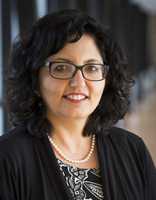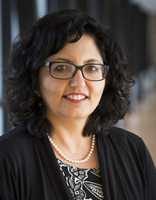
30 Jul Children Undergoing Bone Marrow Transplant Remain At Risk For Premature Death
MedicalResearch.com Interview with:
Smita Bhatia, MD, MPH
Gay and Bew White Endowed Chair in Pediatric Oncology
Professor, Pediatric Oncology
Vice Chair for Outcomes Research, Dept of Pediatrics
Director, Institute for Cancer Outcomes and Survivorship
School of Medicine
University of Alabama at Birmingham
Associate Director for Outcomes Research
UAB Comprehensive Cancer Center
MedicalResearch.com: What is the background for this study? What are the main findings?
Response: Allogeneic bone marrow transplantation BMT is used with a curative intent for life-threatening malignant and non-malignant diseases of childhood.
In this observational study, we describe the late mortality experienced by children undergoing BMT over the past 3 decades. Our cohort included 1388 BMT recipients who had undergone allogeneic BMT between 1974 and 2010 and survived 2 or more years.
We found that, conditional on surviving the first 2 years after bone marrow transplantation, the probability of surviving an additional 20 years approached 80%. Risk of dying from non-relapse-related causes exceeded the risk of dying from relapse-related causes.
The leading non-relapse-related causes of death were infection (with or without graft vs. host disease) and new cancers. Overall, the cohort was at a 14-fold greater risk of dying as compared with the general population (of similar age and sex). Further, this excess risk remained elevated even among those who had survived 25 years.
On a positive note, the risk of late mortality has continued to decline over the past 3 decades.
MedicalResearch.com: What should readers take away from your report?
Response: Children undergoing donor bone marrow transplantation are at risk for premature death several years after bone marrow transplantation. The leading causes are infection and new cancers. However, this risk has declined over the past 3 decades.
MedicalResearch.com: What recommendations do you have for future research as a result of this work?
Response: There is a need to follow bone marrow transplantation survivors closely long-term; and to develop strategies to be vigilant in anticipating and effectively addressing infections, several years after bone marrow transplantation, as well as screening for new cancers in this population.
MedicalResearch.com: Is there anything else you would like to add?
Response: I would like to thank the patients and their families who participated in the study. I would like to thank my collaborators. This study was funded by the Leukemia and Lymphoma Society – the work would not have been possible without their support.
Citation:
[wysija_form id=”3″]
[last-modified]
The information on MedicalResearch.com is provided for educational purposes only, and is in no way intended to diagnose, cure, or treat any medical or other condition. Always seek the advice of your physician or other qualified health and ask your doctor any questions you may have regarding a medical condition. In addition to all other limitations and disclaimers in this agreement, service provider and its third party providers disclaim any liability or loss in connection with the content provided on this website.
Last Updated on July 30, 2018 by Marie Benz MD FAAD

